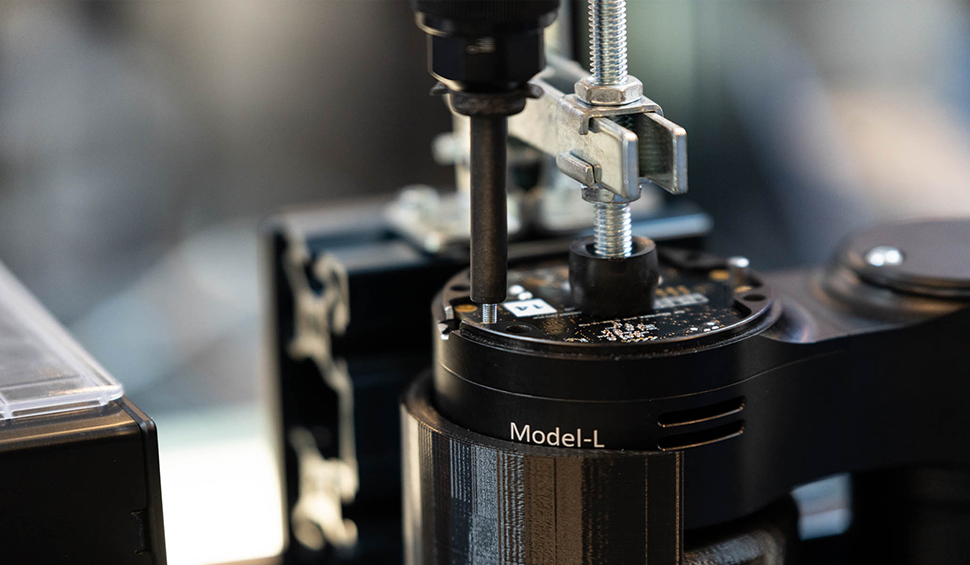9 Powerful Benefits of Collaborative Robot Screwdriving

Is robotic screwdriving really a good idea?
If you are considering investing in screwdriving automation, you might be uncertain if the benefits stack up for your unique situation. Will a collaborative robot be right for your business?
For many people, screwdriving automation can seem difficult, costly, and expensive.
They imagine huge automated screwdriving machines that can only handle a small, rigid set of operations.
They suspect that automation is only suitable for low-mix, high-volume manufacturing businesses.
But, collaborative robotic screwdriving provides a highly accessible way for almost any business to use screwdriving automation. Unlike the conventional approaches, cobots can be applied to many different situations, including high-mix, low-volume manufacturing.
There is also a whole host of benefits associated with collaborative robot screwdriving.
What's wrong with conventional screwdriving automation?
The conventional approach to screwdriving automation was developed for mass production environments. As a result, it is often unsuitable for other types of production.
Common components of a screwdriving machine include:
- A screw feeder unit for each type of screw needed.
- Single or multi-spindle screwdriving units.
- A pneumatic or electric driver to run the spindles.
- Automated feeders to move the workpieces.
All these components can amount to a huge investment of both space and budget!
The major problem with such solutions is that they are not flexible. Each spindle can only handle one type of screw, the system can't be reprogrammed easily, and they require the involvement of an automation specialist as it would be extremely difficult to deploy such machines alone.
On top of these issues, the lead time to deploy conventional screwdriving automation can be restrictively long. It's common for a deployment to take 8-17 weeks.
9 powerful benefits of collaborative robot screwdriving
Using a collaborative robot for screwdriving is a new approach to screwdriving automation. In recent years, cobots have brought the benefits of automation to a much wider selection of companies than were able to access automation in the past.
Here are 9 powerful benefits to using collaborative robots for screwdriving:
1. Easy programming
With the right application kit, programming a screwdriving task can take a matter of minutes, instead of days as it would with conventional screwdriving automation.
Even better, you don't need to be a robotics expert to program a collaborative robot. With its simple programming interface, anyone who can operate a smartphone can program the robot for their chosen application.
2. Improved consistency
Humans are great at cognitive tasks (e.g. designing, planning, problem solving). However, we are just not well suited to repetitive tasks like screwdriving. With such a boring task, the quality of a manual screwdriving application will suffer over a long shift.
With robotic screwdriving, the quality of the operation always remains consistent. The robot will perform the screwdriving in exactly the same way every time.
3. Reduced injuries
One major problem with manual screwdriving is the damaging impact it can have on the human body over time. Musculoskeletal disorders, like carpal tunnel syndrome, have been associated with screwdriving actions.
Robots remove the damaging impact of repetitive tasks from the hands of humans. A collaborative robot won't wear out when performing such actions. This leads to fewer sick days and better job quality.
4. Better flexibility
Unlike conventional screwdriving automation, collaborative robots are extremely flexible. They can easily be redeployed to other tasks when needed and can handle multiple different types of screwdriving operations.
As a result, collaborative robot screwdriving can improve the agility of your entire operation, allowing you to add screwdriving to almost any manufacturing process.
5. Quick deployment
Instead of the months that it would take to deploy conventional screwdriving automation, a collaborative robot can be up and running in a matter of days.
This reduces the disruption that the deployment has on your other operations and allows you to start earning a return on investment from your robot much more quickly.

6. Reliablity
Due to the inconsistency of manual screwdriving, it can be hard to rely on it completely. This can throw off other steps in the production because the cycle time varies depending on the person carrying out the task. A robot will be more reliable than a human performing the same task.
7. Impressive ROI
The return on investment for a collaborative robot can have an impressively short payback time. Unlike conventional automation, which can take years to pay itself back, cobots can have a payback time of just a few months.
You can calculate the ROI of your own application by putting your numbers into our interactive ROI calculator.
8. Consistent accuracy
The accuracy of a screwdriving robot will certainly be more consistent than that of a human operator. Although humans are better at handling uncertainty and variability, a robot will maintain a consistent accuracy over all of its screwdriving operations.
Collaborative robots can have a pose repeatability of just fractions of a millimeter, which is more than suitable for most screwdriving operations.
9. Small footprint
Unlike conventional screwdriving automation, collaborative robots do not require a lot of floor or bench space in your facility. You can set up a cobot on a standard table and it won't get in anyone's way.
How to get the most from your
screwdriving cobot
Probably the best way to get started with collaborative robot screwdriving is to use a suitable application kit, which includes all of the components that are required for the screwdriving operation.
This will allow you to get up and running as quickly as possible and will reduce the friction more commonly associated with the deployment of screwdriving automation.
By the way, Robotiq launched something new. Discover our brand new Screwdriving Solution.
What screwdriving tasks are you considering to automate? Tell us in the comments below or join the discussion on LinkedIn, Twitter, Facebook, or the DoF professional robotics community.






Leave a comment